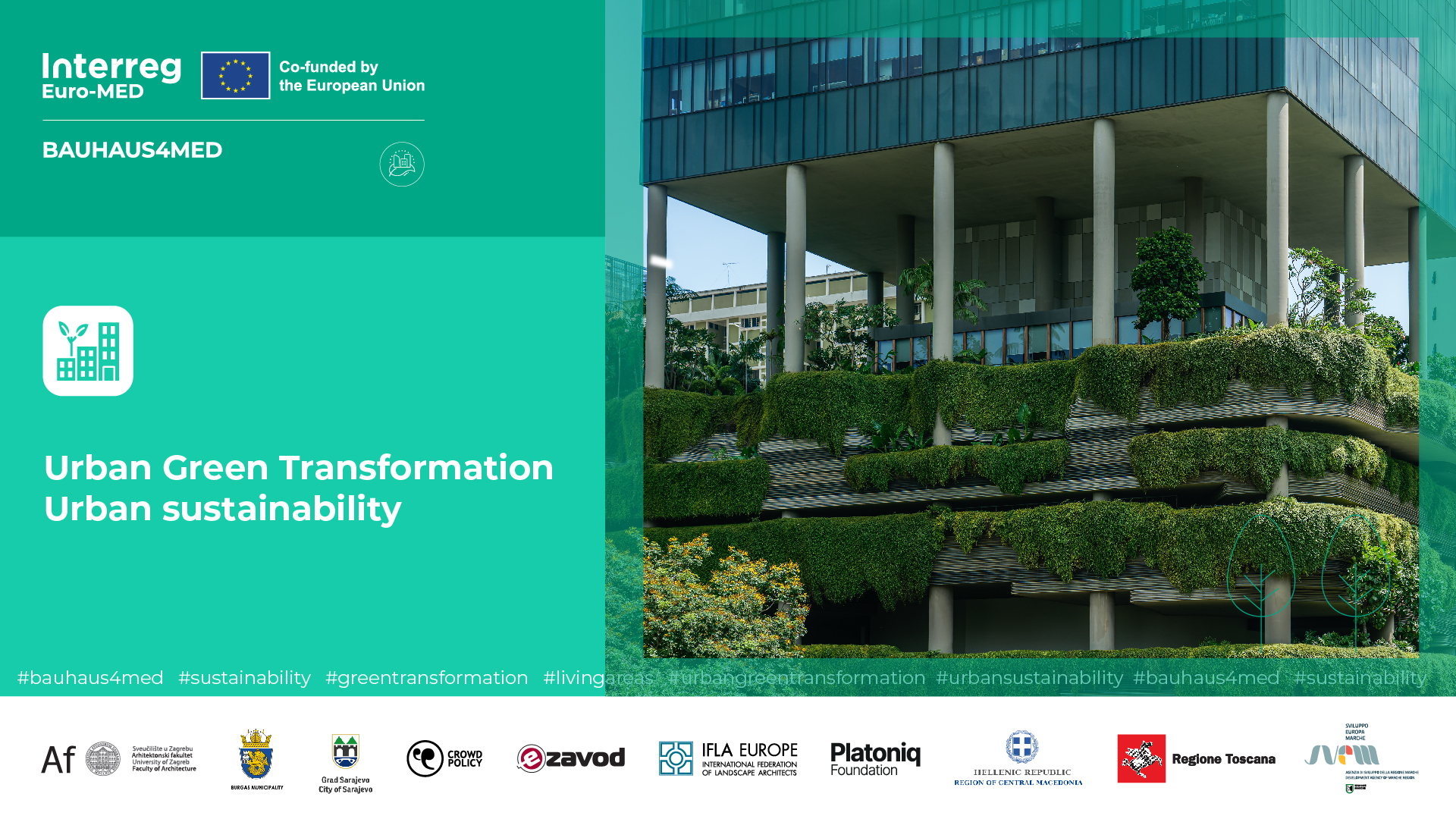The concept of urban green transformation, a shift towards more sustainable and resilient cities, is becoming increasingly crucial in the face of climate change and rapid urbanization. The BAUHAUS4MED project, a collaborative initiative focused on promoting sustainable urban development in the Mediterranean region, offers valuable insights and best practices for this transformation.
The Importance of Urban Green Transformation
Urban green spaces, including parks, gardens, green roofs, and urban forests, play a pivotal role in enhancing the quality of life in cities. They provide numerous benefits, such as:
- Improved air quality: Trees and plants absorb pollutants and carbon dioxide, reducing air pollution and mitigating climate change.
- Enhanced biodiversity: Green spaces create habitats for various species, promoting biodiversity and ecological balance.
- Climate regulation: Urban green infrastructure helps to cool cities, reduce heat island effects, and manage stormwater.
- Social and mental well-being: Access to green spaces has been linked to improved mental health, reduced stress, and increased physical activity.

BAUHAUS4MED: Leading the Way in Urban Green Transformation
The BAUHAUS4MED project has been instrumental in promoting sustainable urban development and green transformation in the Mediterranean region. Through its innovative approach, the project has implemented various initiatives and best practices, including:
- Green infrastructure development
- Sustainable urban planning
- Citizen engagement
- Knowledge sharing and capacity building
Examples of Urban Green Transformation Good Practices
Here are some examples of successful urban green transformation initiatives from around the world:
- Singapore’s Gardens by the Bay
- Innovative design: This iconic park features Supertrees, towering vertical gardens that serve as both architectural landmarks and sustainable features.
- Environmental benefits: The Supertrees collect rainwater, generate solar energy, and provide habitats for biodiversity.
- Educational and recreational spaces: Gardens by the Bay offers a variety of educational programs, nature trails, and recreational facilities for visitors.
- Copenhagen’s Cycle Superhighways
- Sustainable transportation: The city has invested heavily in creating a network of dedicated bike lanes, encouraging cycling as a primary mode of transportation.
- Health and environmental benefits: Cycling reduces air pollution, traffic congestion, and greenhouse gas emissions while promoting physical health.
- Urban planning: The bike lanes are integrated into the city’s overall urban planning, making it easier for residents to choose cycling over cars.
- Paris’s Green Roof Initiative
- Climate mitigation: Green roofs help to reduce urban heat island effects, improve air quality, and manage stormwater runoff.
- Biodiversity: Green roofs provide habitats for plants and insects, contributing to urban biodiversity.
- Energy efficiency: Green roofs can help to insulate buildings, reducing energy consumption.
- New York City’s High Line
- Urban revitalization: The High Line, a former elevated railway track, has been transformed into a public park, revitalizing a once-neglected area.
- Green space: The park features lush vegetation, walkways, and public art installations, creating a unique urban oasis.
- Community engagement: The High Line has become a popular destination for residents and tourists, fostering a sense of community and promoting urban tourism.
- Milan’s Bosco Verticale (Vertical Forest)
- Innovative architecture: This residential complex features two high-rise buildings with integrated trees and shrubs on the facades.
- Environmental benefits: The Vertical Forest helps to improve air quality, reduce noise pollution, and regulate the local climate.
- Biodiversity: The trees and shrubs provide habitats for birds, insects, and other wildlife.
- These examples demonstrate the potential of urban green transformation to create more sustainable, livable, and resilient cities. By incorporating green infrastructure, promoting sustainable transportation, and engaging with local communities, cities can address a range of environmental and social challenges.
Urban green transformation is essential for creating sustainable and resilient cities. The Bauhaus4MED project will demonstrate the potential of collaborative initiatives to drive this transformation.
By implementing innovative green practices and involving local communities, cities can enhance their quality of life, mitigate climate change, and create a more sustainable future for generations to come.


